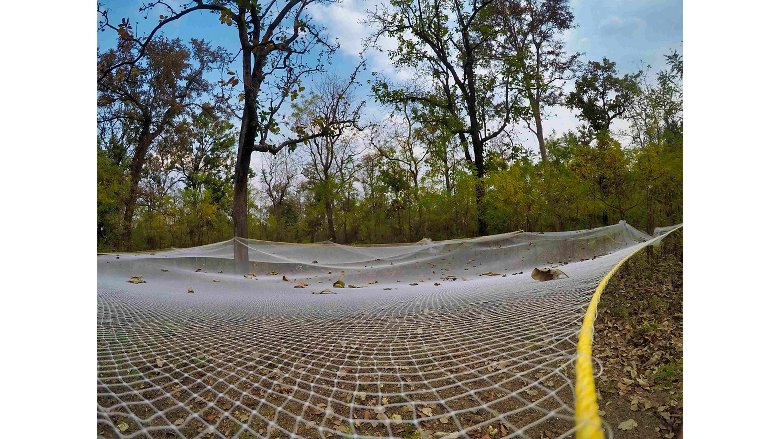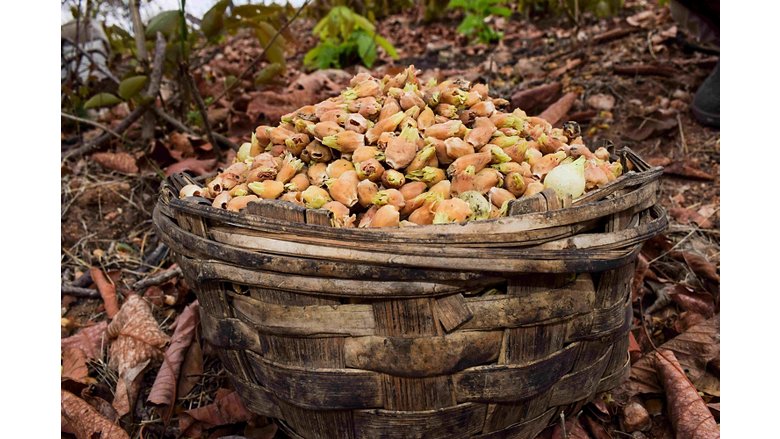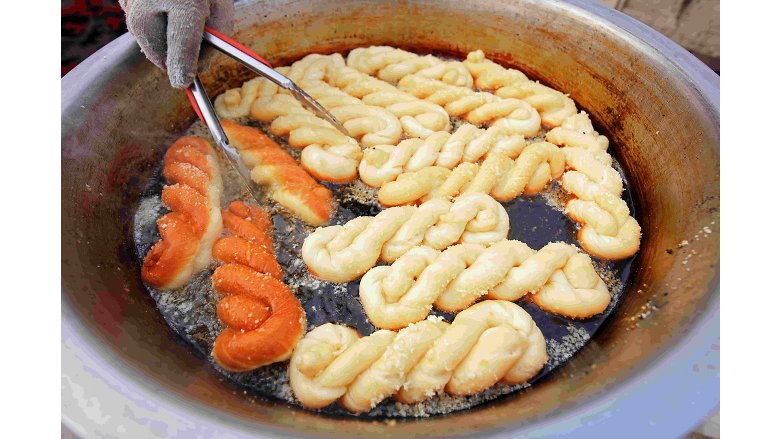A Side Enterprise
The Mahua are indigenous trees around about 40 feet tall, found throughout in the natural deciduous forests across central India. The flowers on this tree bloom in abundance in the months of March and April and for many decades, they are being collected and sold by the villagers to liquor manufacturing companies. For most villagers, whose main livelihood is farming, this trading in Mahua flowers during the lean work months of March and April provided them with an added source of income.
Before the nets came, the flowers would be collected from the ground. Villagers had to first clean the ground so the flowers could be collected easily. They lit small fires to burn any dried leaves and shrubs in the landing areas under and around the trees. This practice unfortunately not only destroyed the natural vegetation of the forest, these fires would frequently spread, troubling the animals and releasing harmful gases in the air. Such supposedly innocuous fires were in the long term detrimental to the environment and biodiversity of the forests.
To contain the fires and encourage villagers to help protect the green cover and biodiversity of the forest, in 2020, the Madhya Pradesh Forest Department started providing villagers with free nets under the World Bank’s Ecosystem Services Improvement Project. The idea to use nets came from the community itself. These nets are tied to the trees—two to a tree—and suspended to catch the flowers, preventing them from falling to the muddy forest floor. The nets ensure that the flowers don’t get soiled when they fall and are not trampled on by animals.
The nets have helped villagers save time as it is no longer necessary for them to remain in the forest for a large part the day laboriously picking the flowers as they fell. While the flowers get collected in the nets, the villagers go about their daily chores - children go to school, women complete their housework, and the men take up odd jobs. At the end of the day, the flowers are easily collected in straw baskets, dried, and stored for sale.
Asha, a former sarpanch or village head from Budhni, in district Sehore, has sciatica in her back and legs and used to find the process of collecting the flowers tedious and painful. Since she has started using the nets, she no longer needs to bend and pick them up all afternoon. She can now come to the forest late in the afternoon and collect the flowers easily from the nets.
Ram Kishore Yadav who also heads the Van Suraksha Samiti (Forest Protection Committee) says that having the nets provides them with a double benefit. While the flowers are collecting in the nets, “I am free during the day to take up other jobs in the village – like construction labor, work in the forest and earn a double income.”





